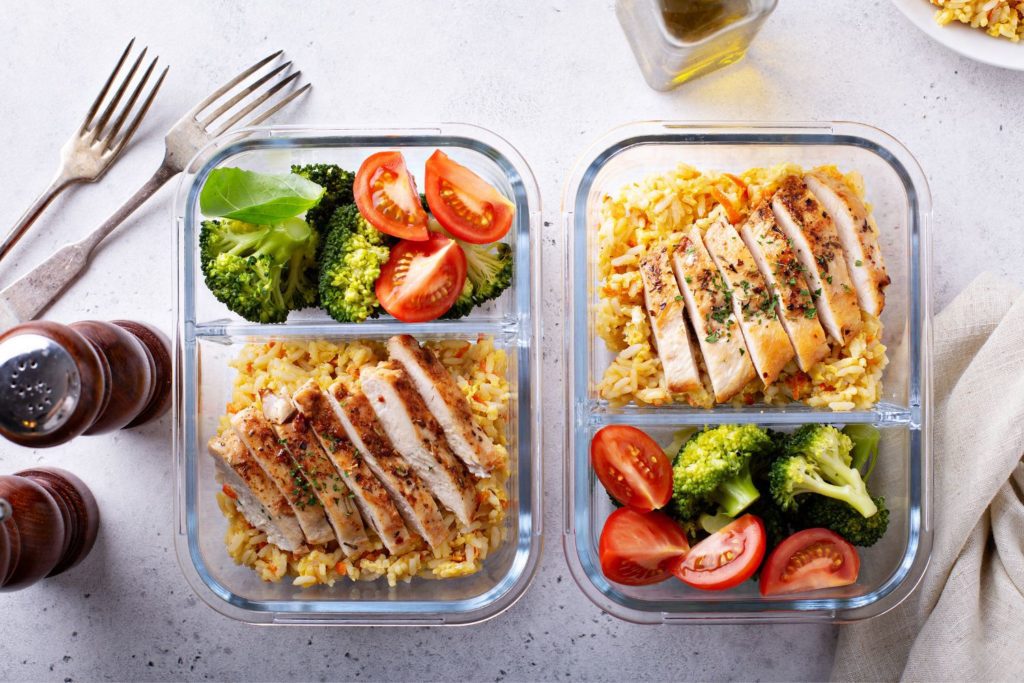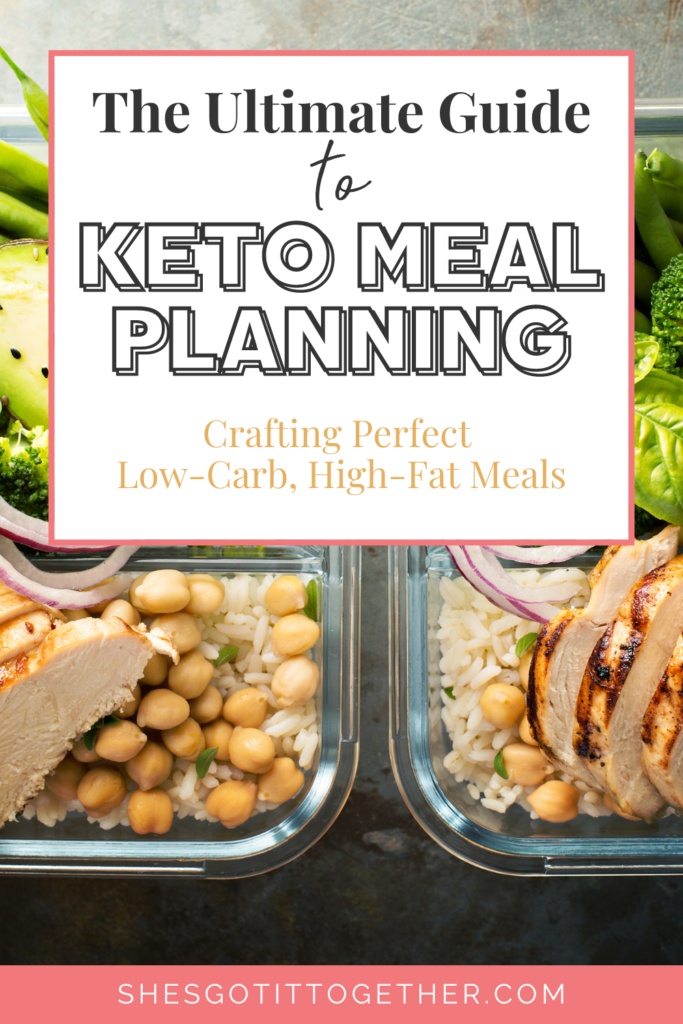This post contains affiliate links, meaning, at no additional cost to you, if you click through and make a purchase, I may receive a commission. I only share items that I truly love and use myself. For more information please see my disclosures here.
Be sure to listen to the
She’s Got It Together Podcast!
Are you ready to dive into the world of ketogenic meal planning? Whether you’re a seasoned keto pro or a curious newbie, this guide is here to help you craft perfect low-carb, high-fat meals that keep you on track with your health goals. The keto diet is all about finding the right balance of macronutrients to keep your body in a state of ketosis, where it burns fat for fuel instead of carbs. Let’s get started on this delicious journey!
Why Keto Meal Planning is a Game-Changer
First things first, why should you bother with keto meal planning? Here are a few fantastic reasons:
- Stay in Ketosis: Ensure you’re eating the right balance of macros to keep your body in fat-burning mode.
- Save Time: Spend less time figuring out what to eat every day.
- Save Money: Cut down on grocery bills by buying in bulk and avoiding unnecessary snacks.
- Eat Healthier: Focus on nutrient-dense foods that support your keto lifestyle.
Step 1: Understand Your Macros
Before you start meal planning, it’s essential to understand your macronutrient needs. The keto diet typically consists of:
- 70-75% Fat: Avocado, olive oil, butter, nuts, seeds.
- 20-25% Protein: Meat, fish, eggs, dairy.
- 5-10% Carbs: Leafy greens, non-starchy vegetables, berries.
You can use a keto calculator to determine your specific macro needs based on your age, weight, height, and activity level.
Step 2: Stock Your Keto Pantry
Having a well-stocked pantry makes keto meal planning much easier. Here are some essentials:
- Fats and Oils: Olive oil, coconut oil, avocado oil, ghee, butter.
- Proteins: Grass-fed meat, wild-caught fish, free-range eggs, poultry.
- Low-Carb Veggies: Spinach, kale, broccoli, cauliflower, zucchini.
- Nuts and Seeds: Almonds, walnuts, chia seeds, flaxseeds.
- Dairy: Heavy cream, cheese, Greek yogurt.
- Other: Bone broth, keto-friendly sweeteners (stevia, erythritol), spices, and herbs.
Step 3: Plan Your Meals
Now, let’s get to the fun part—planning your meals! Here are some tips:
- Keep It Simple: Choose recipes with minimal ingredients and steps.
- Batch Cooking: Plan meals that can be made in large batches and used for multiple meals.
- Mix and Match: Prepare versatile ingredients that can be used in different ways throughout the week.
Sample Keto Menu
To get you started, here’s a sample keto menu that includes breakfast, lunch, dinner, and snacks for a day:
Breakfast: Keto Avocado Egg Bowl
- 1 avocado, halved and pitted
- 2 eggs
- 1 tbsp olive oil
- Salt, pepper, and paprika to taste
Lunch: Chicken Caesar Salad
- 1 grilled chicken breast, sliced
- 2 cups romaine lettuce, chopped
- 1/4 cup grated Parmesan cheese
- 2 tbsp Caesar dressing (keto-friendly)
- 1 tbsp olive oil
Snack: Cheese and Nut Plate
- 1 oz cheddar cheese
- 1/4 cup mixed nuts (almonds, walnuts, pecans)
Dinner: Garlic Butter Steak with Veggies
- 1 steak (ribeye or sirloin)
- 2 cups broccoli florets
- 2 tbsp butter
- 2 cloves garlic, minced
- Salt and pepper to taste
Snack: Keto Chocolate Fat Bombs
- 1/2 cup coconut oil
- 1/2 cup almond butter
- 2 tbsp cocoa powder
- Sweetener to taste (stevia or erythritol)

Step 4: Create Your Grocery List
Once your meals are planned, create a grocery list. Organize it by sections (produce, meat, dairy, pantry items, etc.) to make shopping more efficient.
Step 5: Prep Ahead
Meal prepping can save you tons of time during the week. Here are some ideas:
- Chop Veggies: Pre-chop veggies for salads, stir-fries, or snacks.
- Cook Proteins: Cook a big batch of chicken breasts, ground beef, or steak.
- Batch Cooking: Make large batches of soups, stews, or casseroles to freeze.
Tips for Successful Keto Meal Planning
- Keep It Simple: Focus on recipes with minimal ingredients and steps.
- Be Realistic: Plan meals you know you’ll have time to cook.
- Use Leftovers: Plan for leftovers to save time and reduce waste.
- Stay Hydrated: Drink plenty of water throughout the day.
- Track Your Macros: Use a food journal or app to track your macronutrient intake.
Common Challenges and Solutions
Challenge 1: Cravings for Carbs
- Solution: Keep keto-friendly snacks on hand and try keto baking recipes to satisfy your sweet tooth.
Challenge 2: Time Constraints
- Solution: Use batch cooking and meal prep to save time during the week. Opt for quick and easy recipes on busy nights.
Challenge 3: Eating Out
- Solution: Research restaurant menus ahead of time and choose dishes that fit your macros. Don’t be afraid to ask for modifications to fit your dietary needs.
Helpful Resources
Here are some fantastic websites to help you on your keto meal planning journey:
- Ruled.me: Comprehensive guides and recipes for the keto diet.
- DietDoctor.com: Keto recipes, meal plans, and expert advice.
- KetoConnect.net: Delicious keto recipes and meal prep ideas.
- PerfectKeto.com: Keto recipes, tips, and product recommendations.
Keto meal planning doesn’t have to be complicated or time-consuming. With a little bit of planning and some smart strategies, you can enjoy nutritious, balanced meals that help you stay in ketosis and reach your health goals. Remember, the key is to keep things simple, use versatile ingredients, and make the most of your time.



